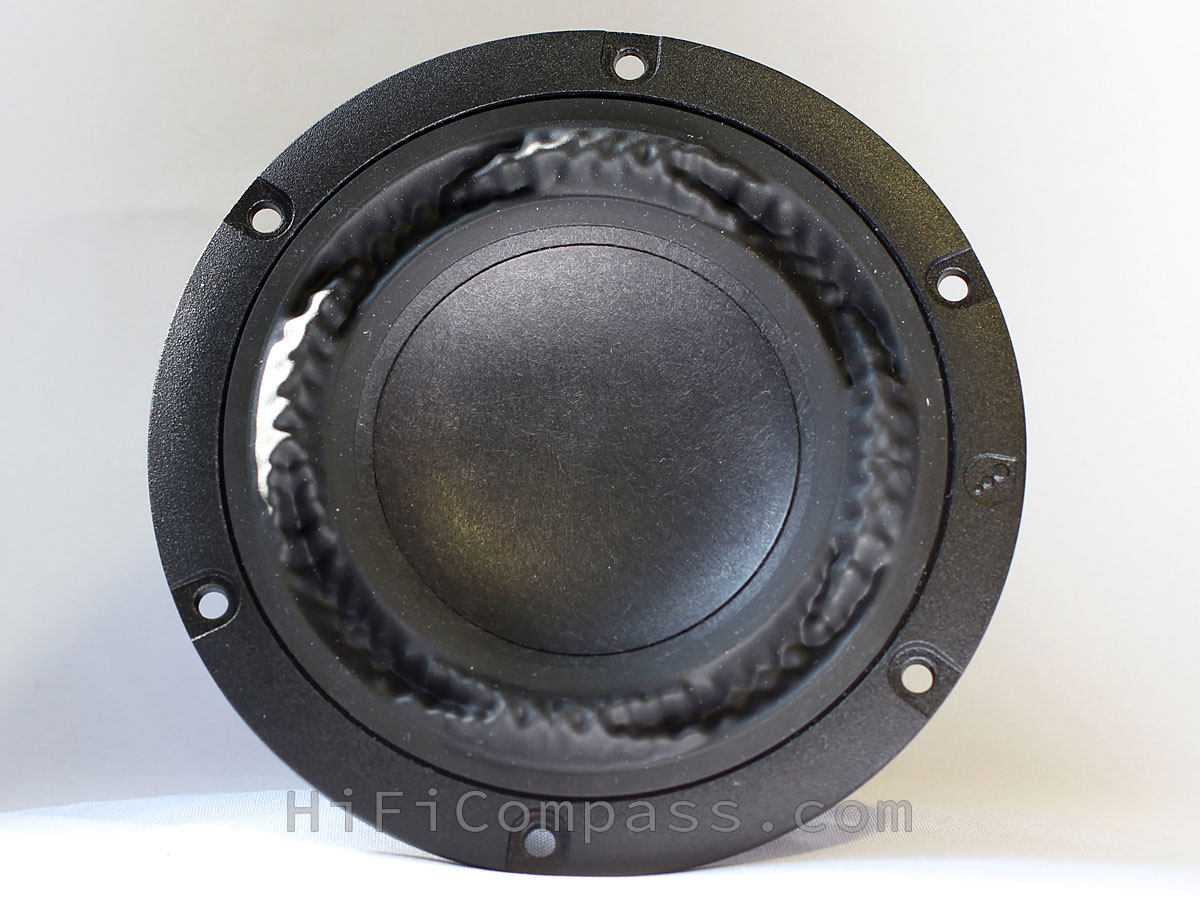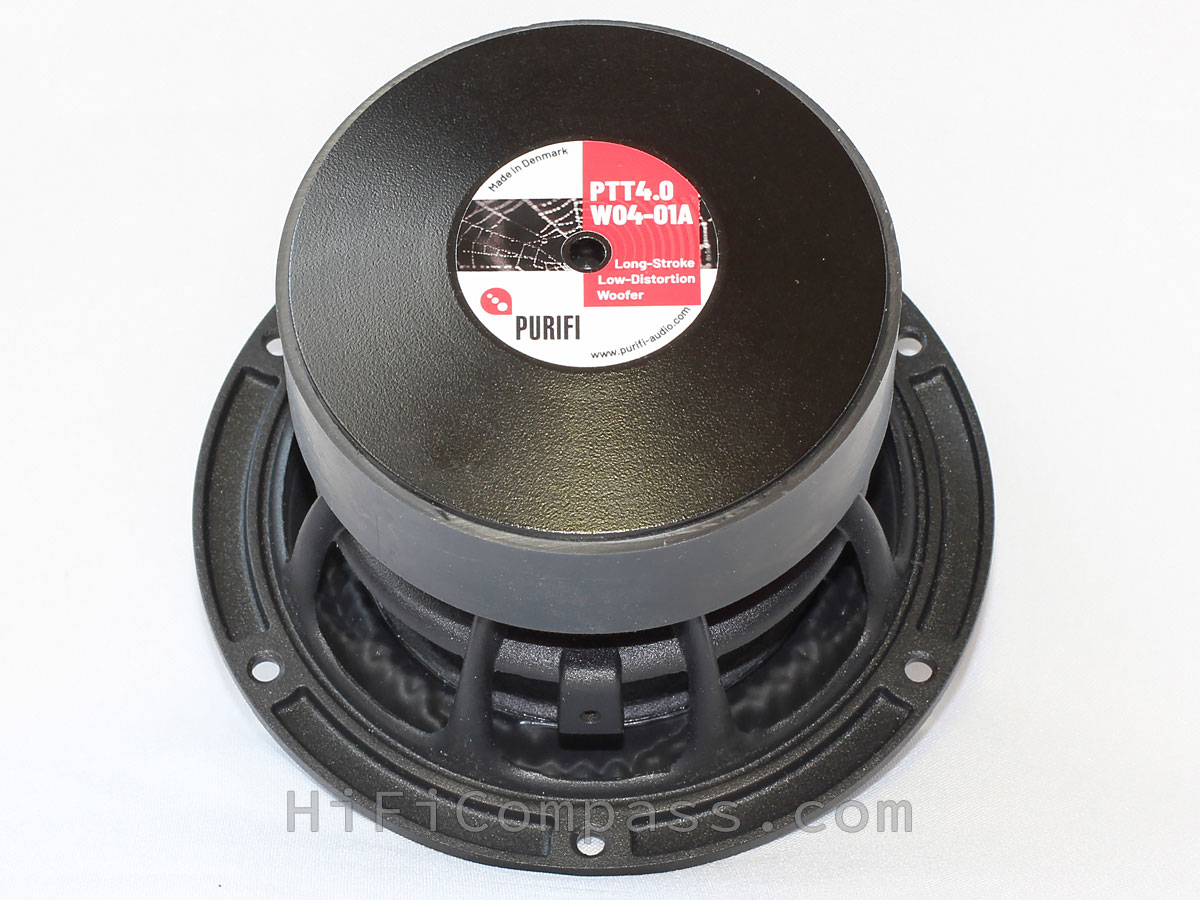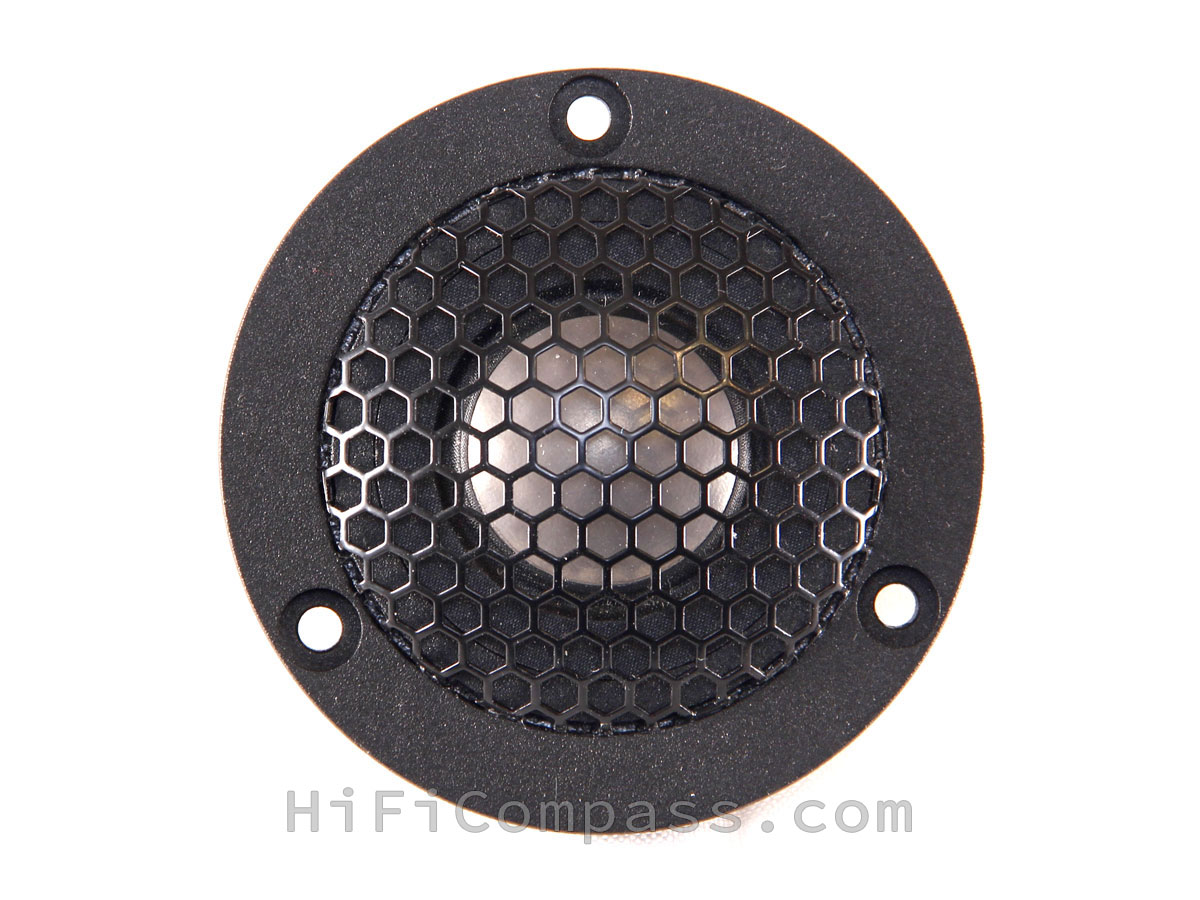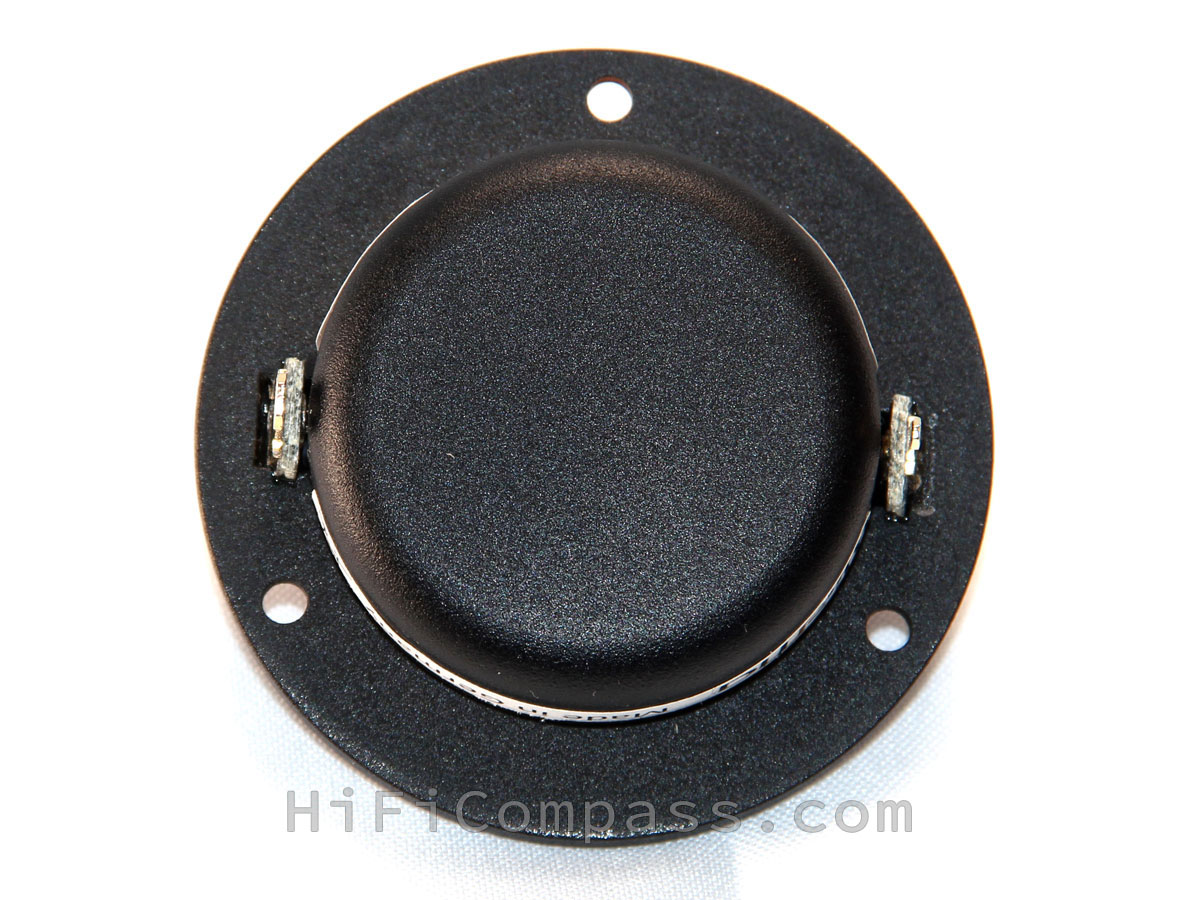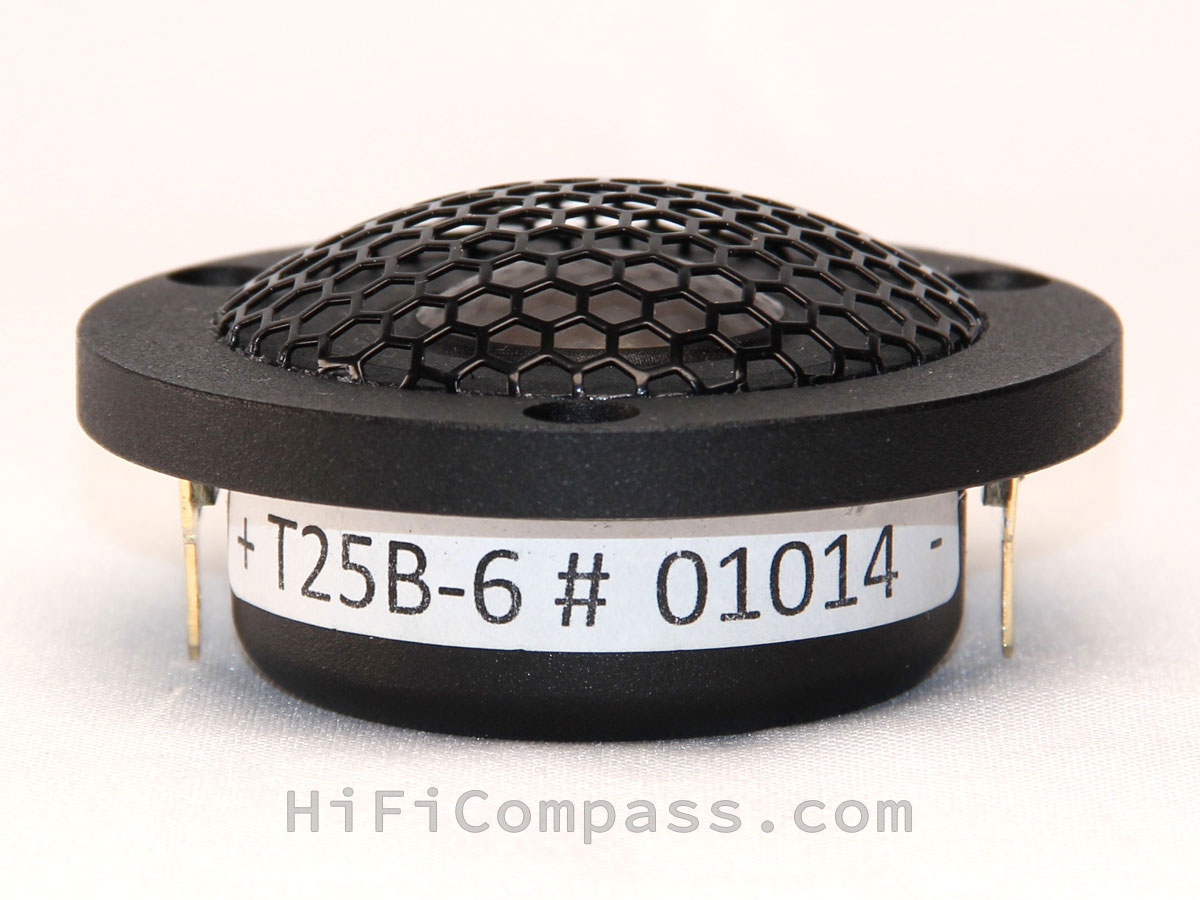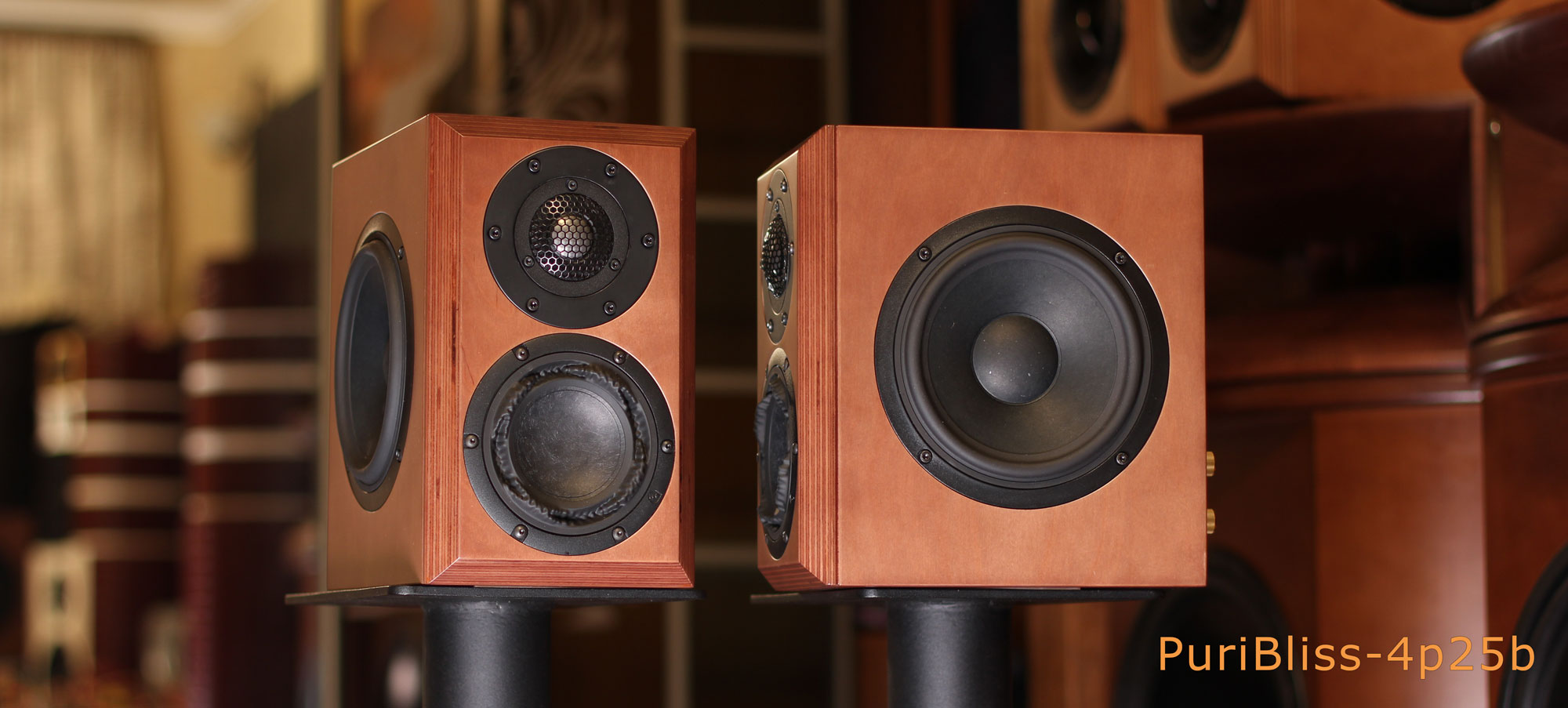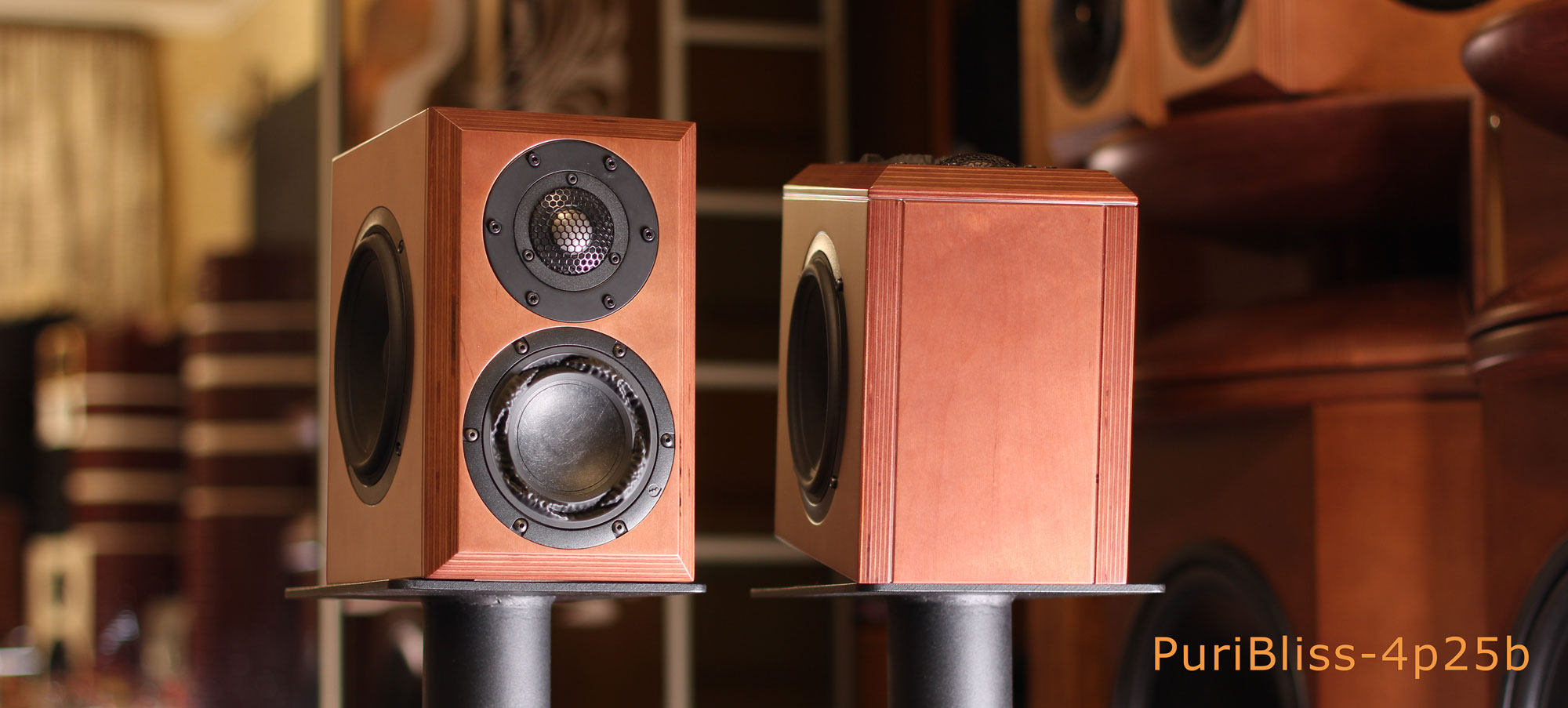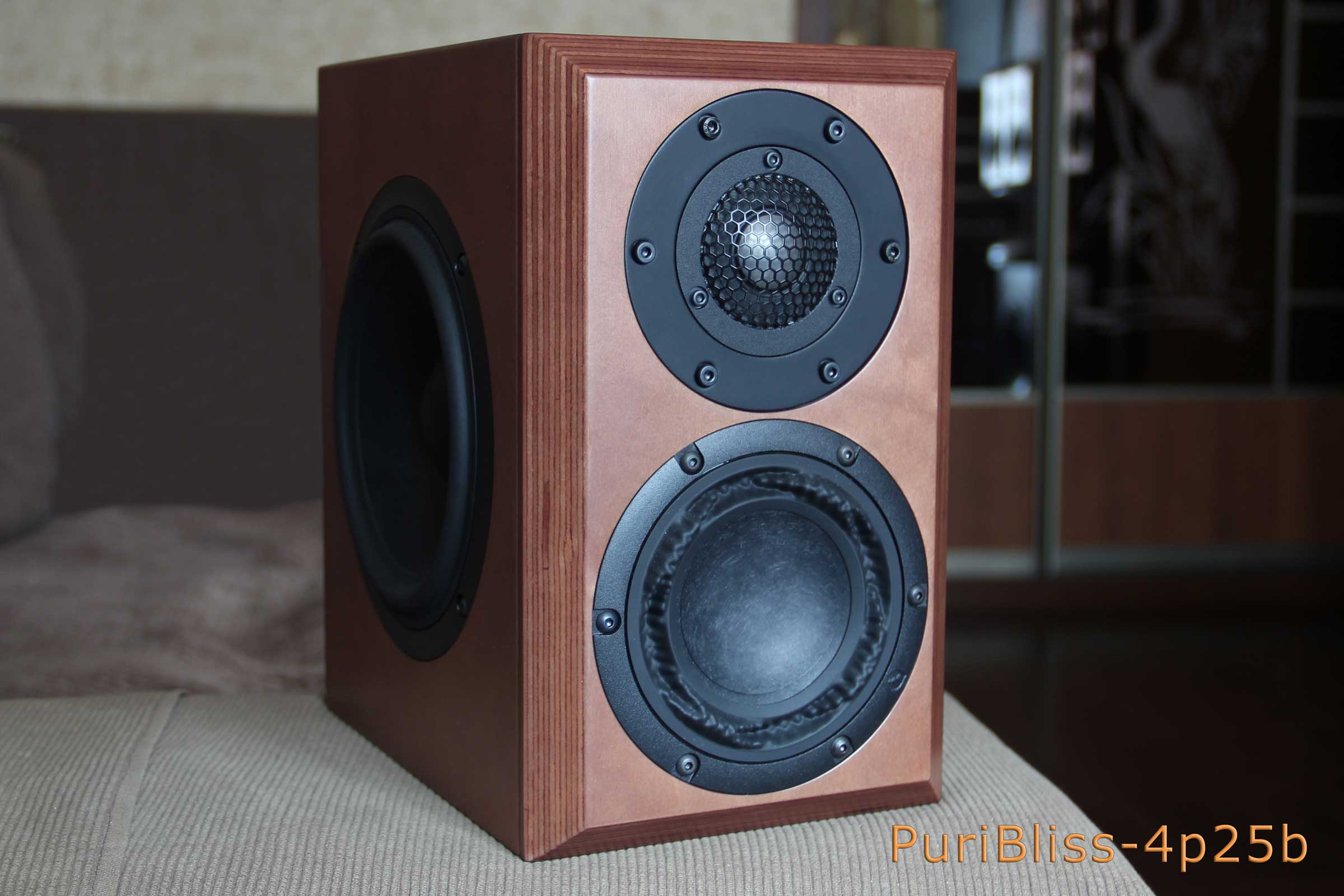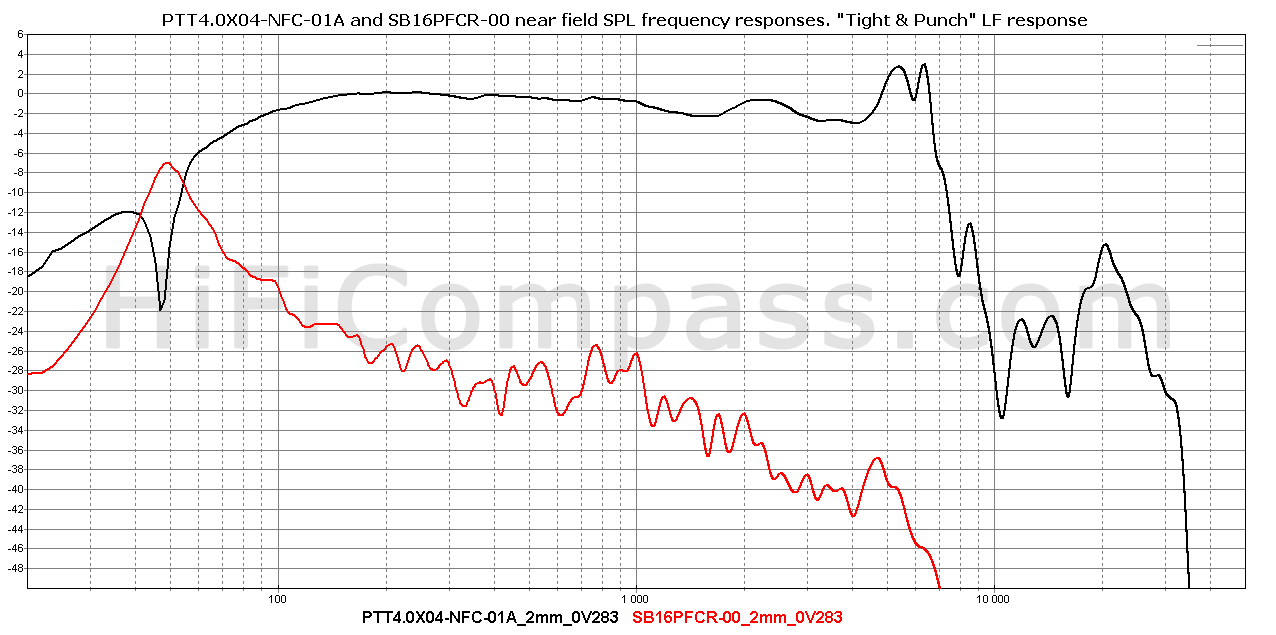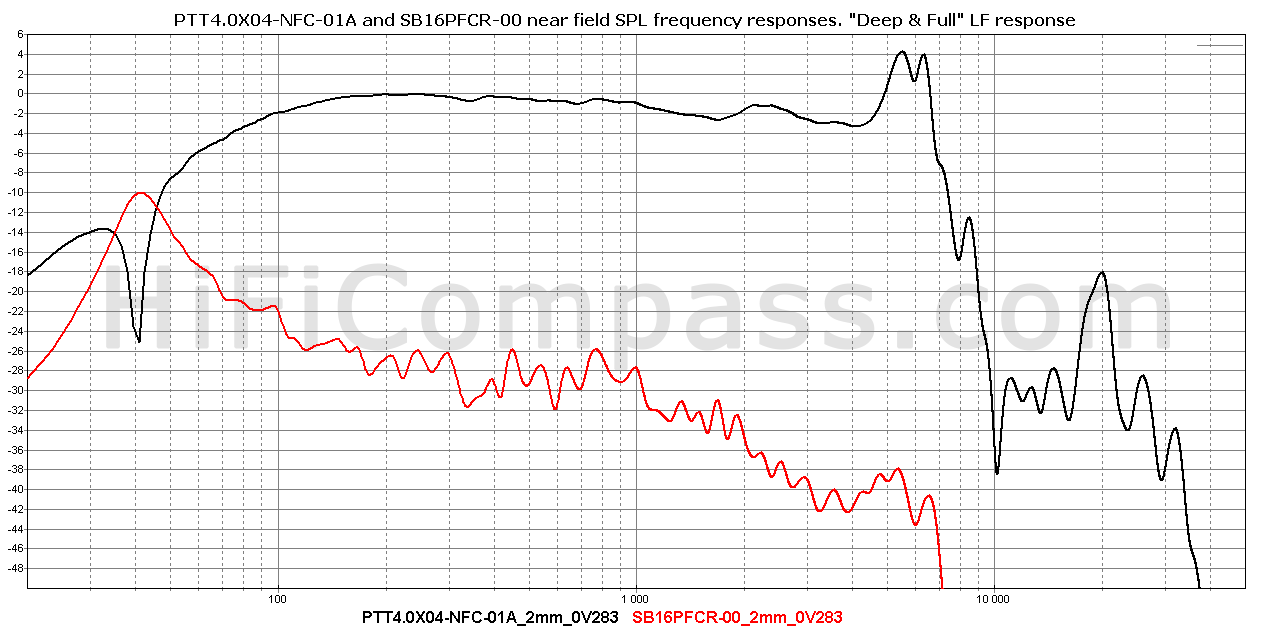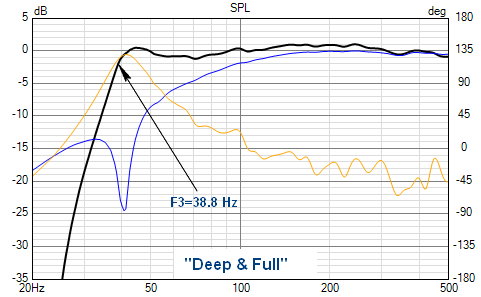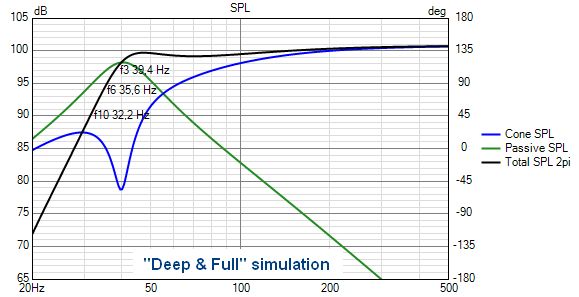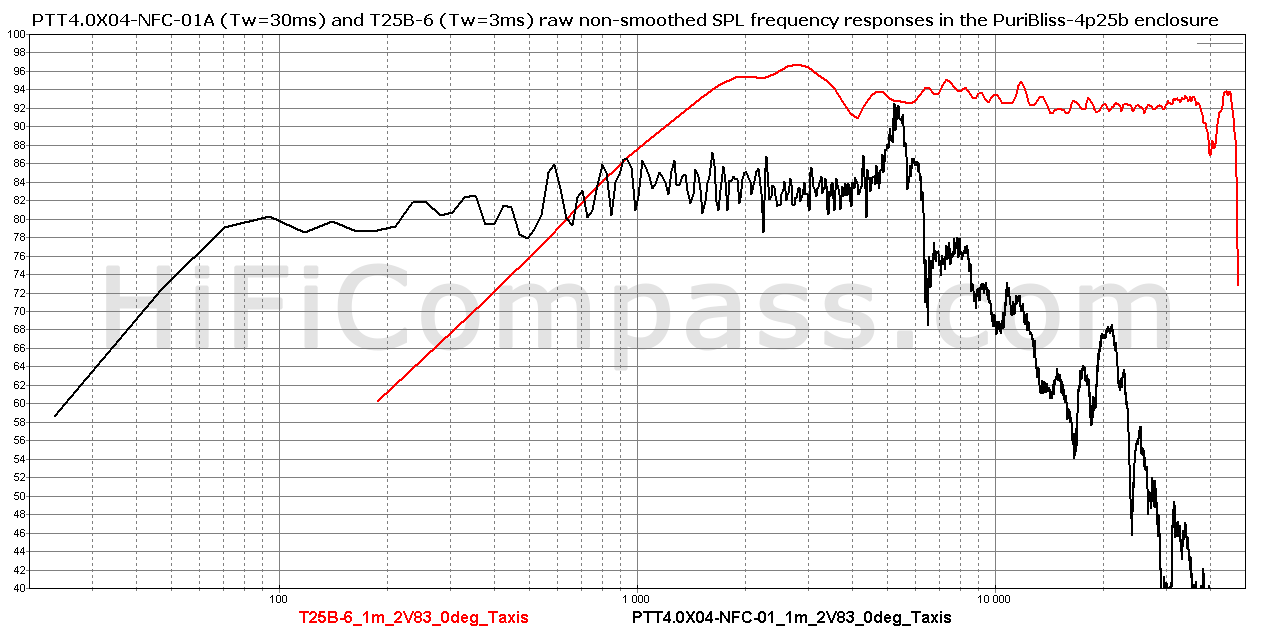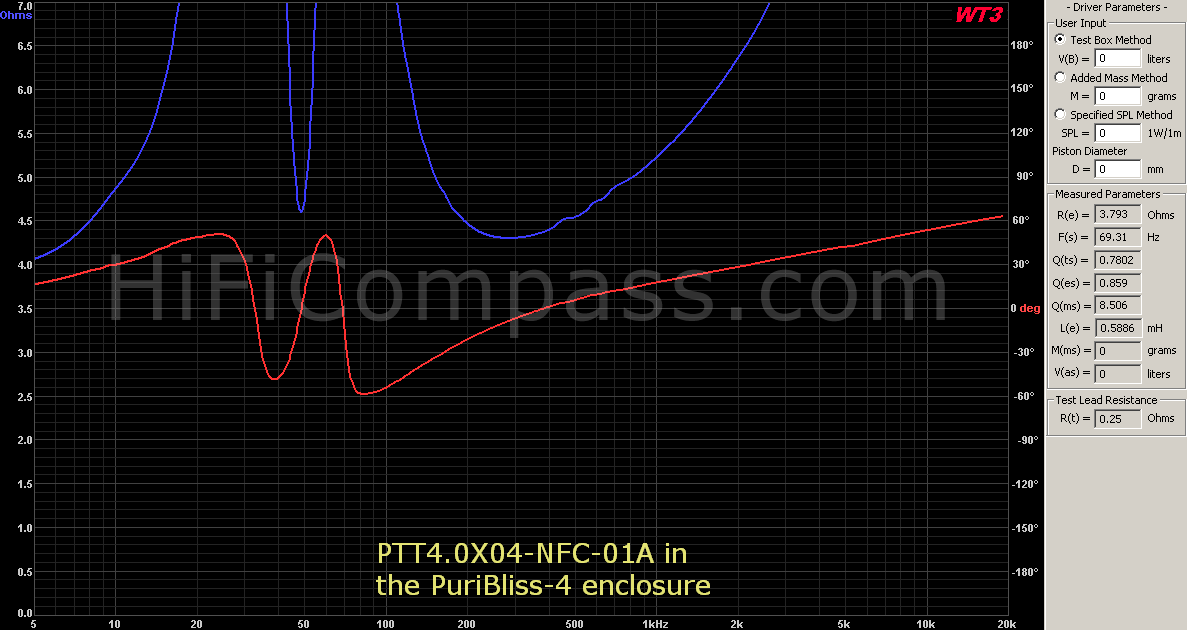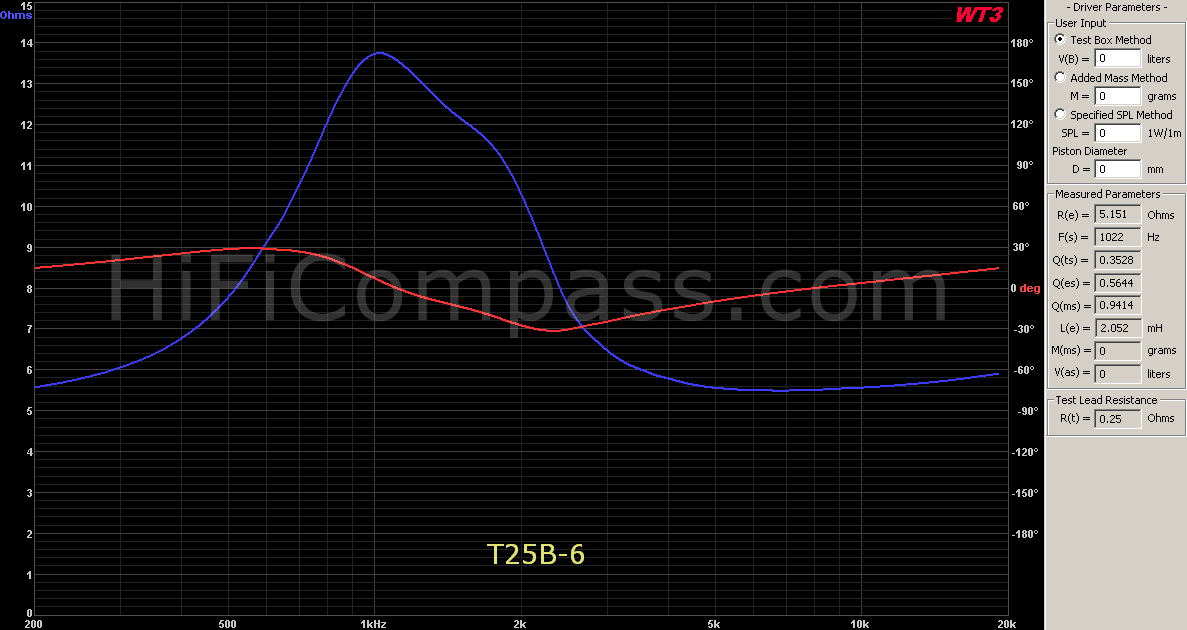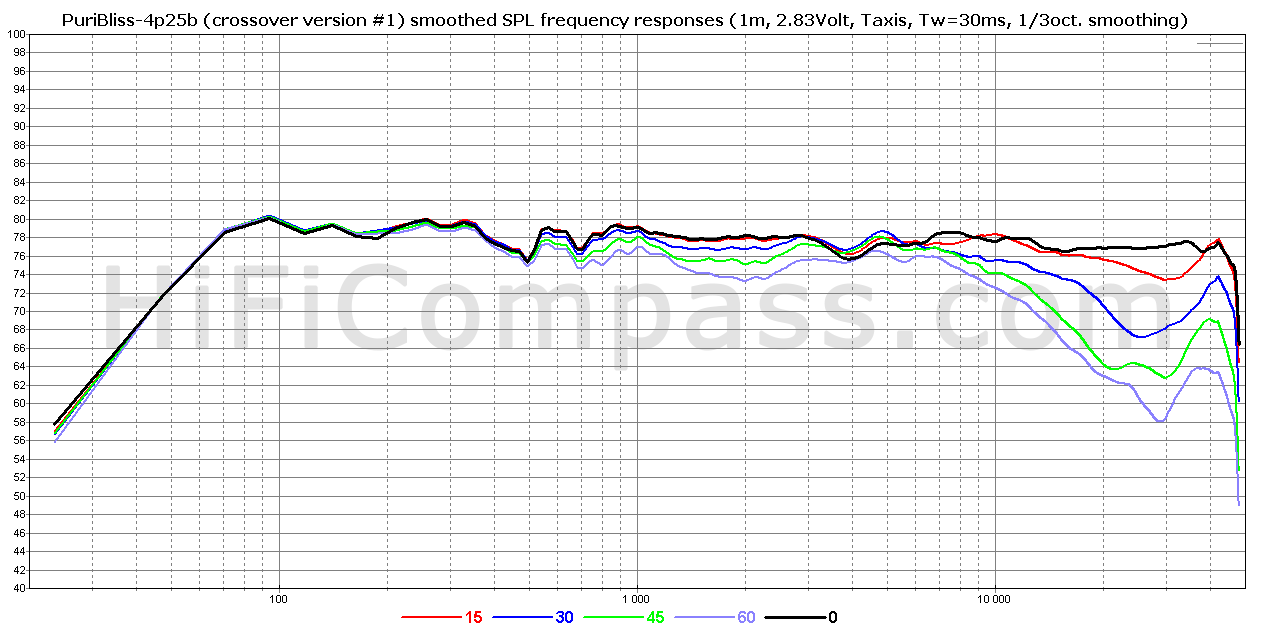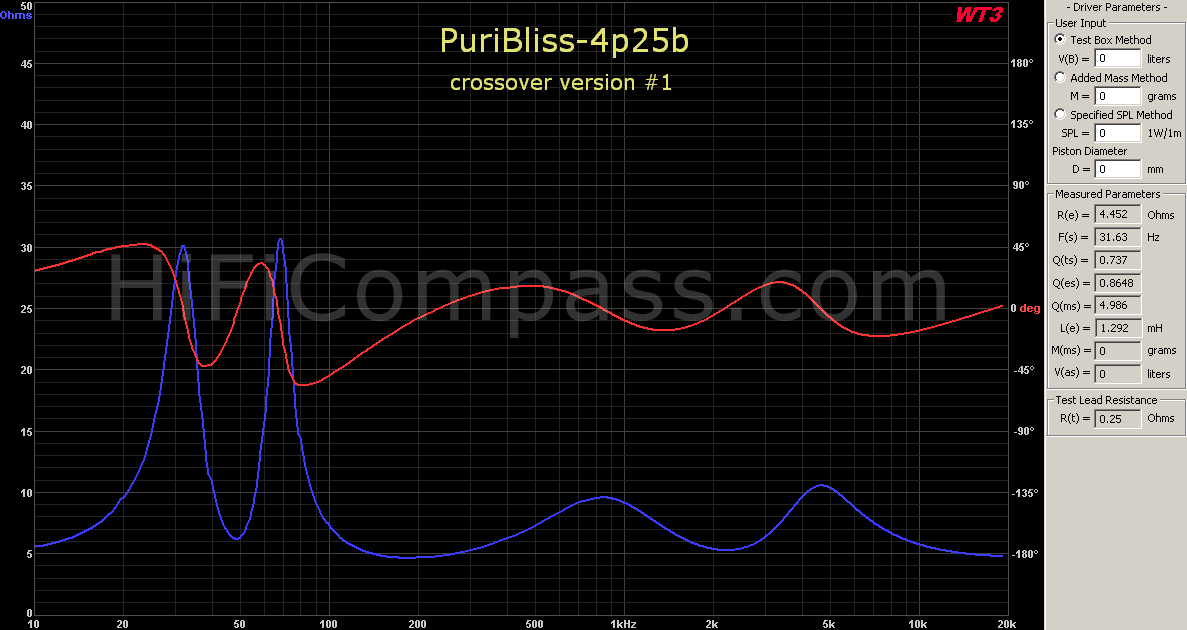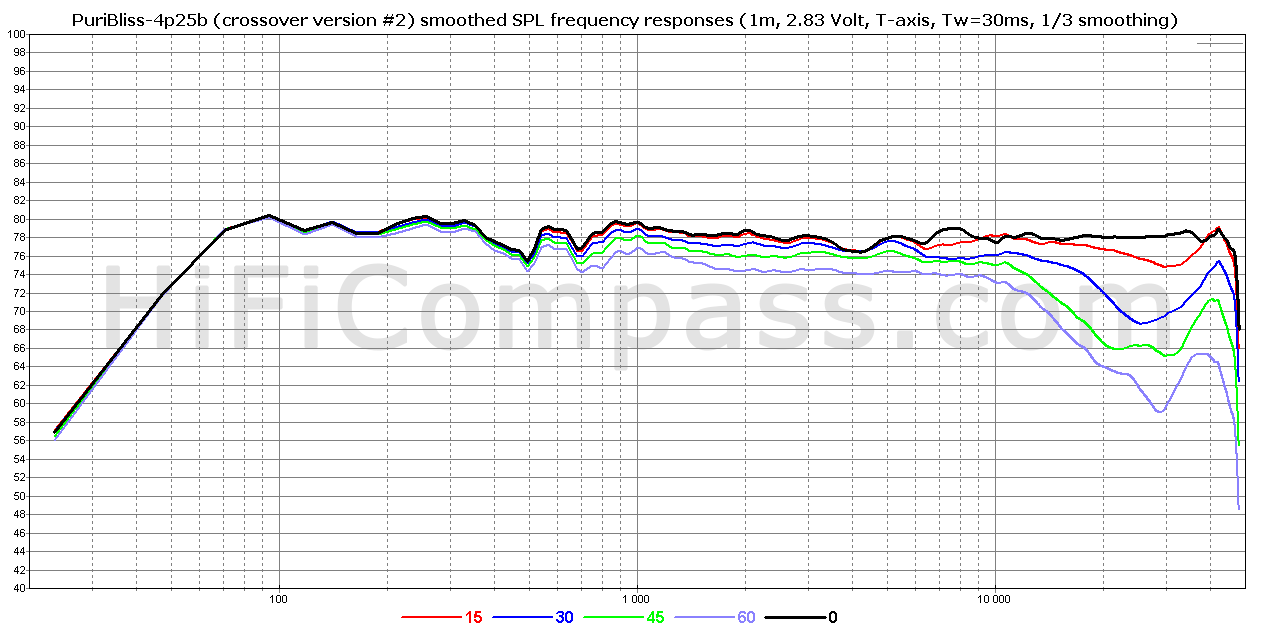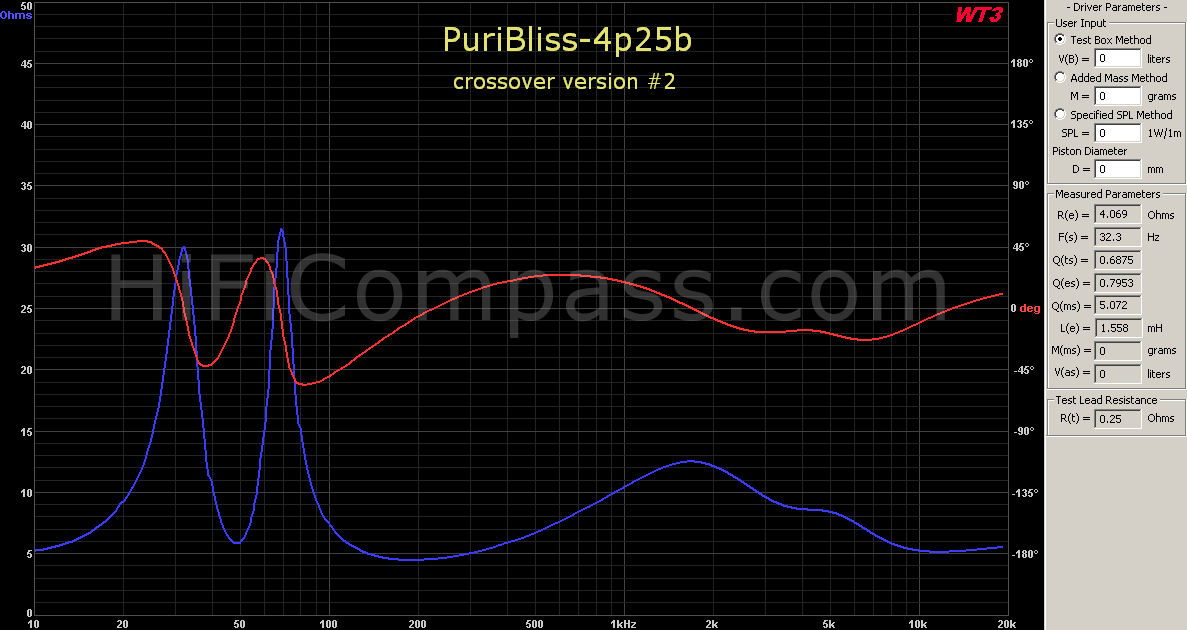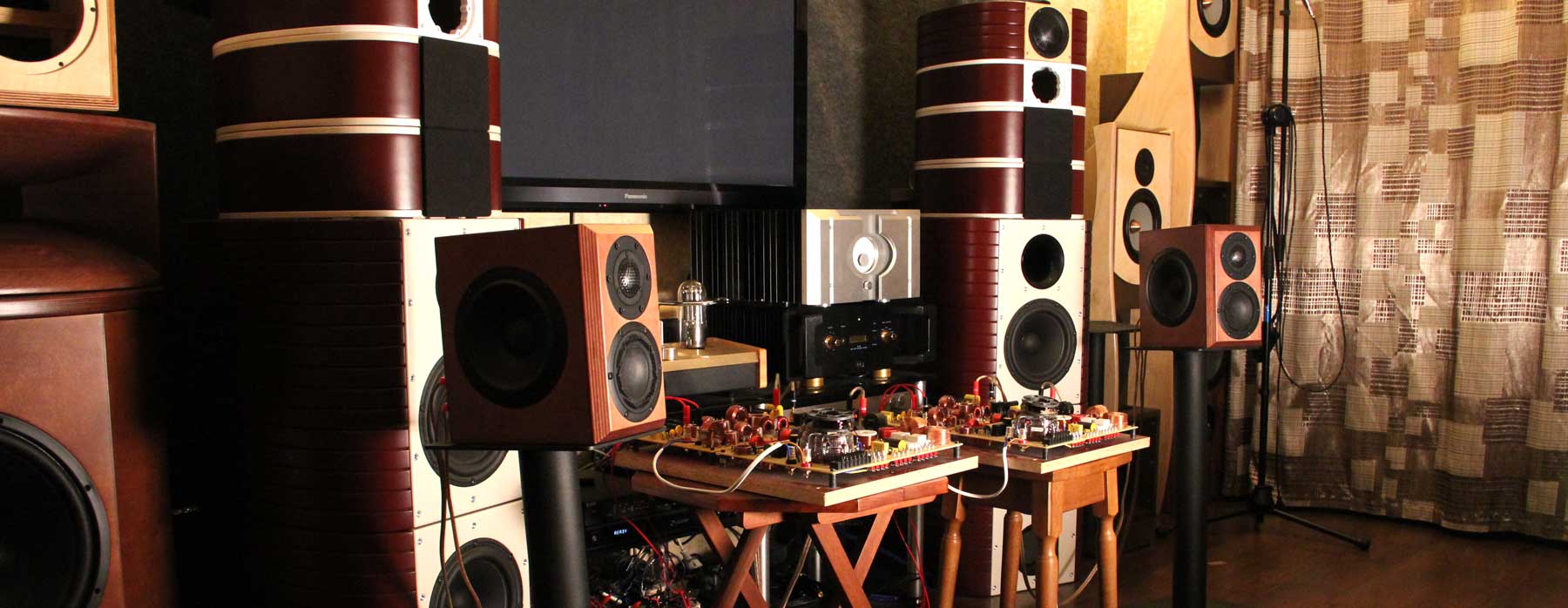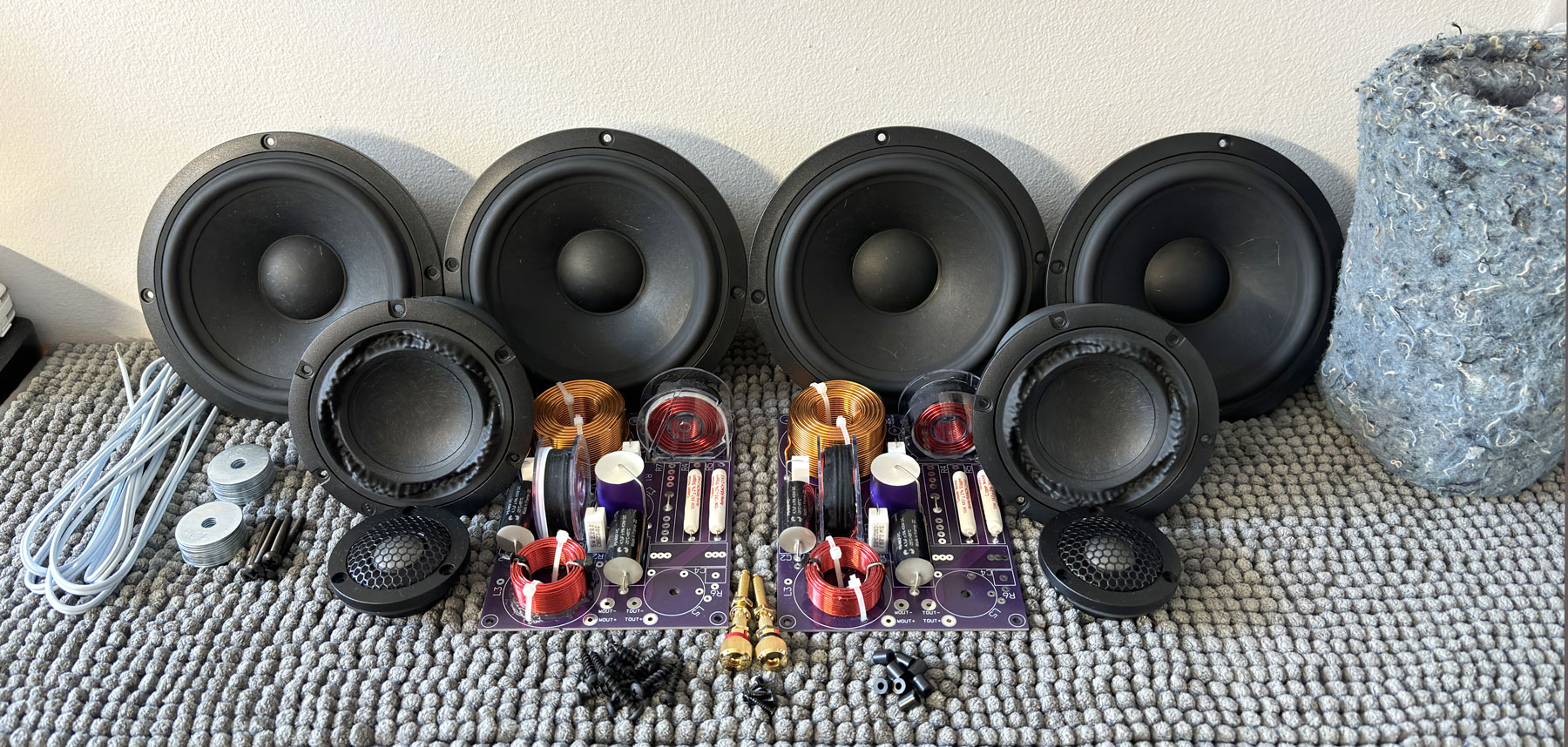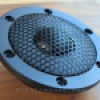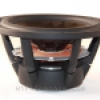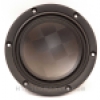HiFiCompass
PuriBliss-4p25b
The design concept and speaker drivers selection
The idea of building high-quality micro-speakers took possession of me back in October 2020, right after testing the Purifi PTT4.0W04-01A 4" midwoofer. At the time, I was still impressed by the PuriBliss-BeWg project, the scale, articulation of bass, clarity and transparency that these mid-sized bookshelves provided. Naturally, with the release of the Purifi's 4" midwoofer using the same technology as the larger models, I really wanted to see what sound could be achieved in the lightest weight category of bookshelf type speakers. The preliminary measurements instilled decent optimism in the success of the project and the usefulness of the time spent, otherwise, I would hardly have raised my hand to waste life resources for nothing.
So, the basis of the project will be a 4" Purifi PTT4.0W04-01A midwoofer. With the choice of tweeter too there was no doubt - definitely BlieSMa T25B-6, an excellent tweeter with beryllium membrane, one of the best available in the market, in many aspects unparalleled, and already by that time tried and tested in the previous project.
At the end of August 2021 the first prototype of the loudspeakers was assembled and..... oh my God! I must say that first impressions exceeded all my imaginable and unimaginable expectations! These micro-speakers turned out to be the speakers that surprised me the most in my life at that moment! I say this without exaggeration, I felt a real cognitive dissonance, the breakup of all templates and the collapse of all stereotypes. The size of the sound stage, the fullness and fundamentality of sound did not correlate with the size of the speakers. I could never have imagined that speakers the size of little more than two bread "bricks" could fill my room with such sound.
Okay, emotions aside. After the first experiments, I definitely decided that the project would be further developed using different tweeters, the good thing is that BlieSMa has as many as four types of different membranes on the T25 chassis.
Due to the fact that there will be several modifications, there was a need for their most capacious and logical naming. I'm sorry that the names of the models cannot boast of brevity, but there is no other way. This is how the designation of any model of the PuriBliss line will be deciphered:
PuriBliss-4p25bw:
PuriBliss=the name of loudspeakers series
-4=the midwoofer's size in inches (4", 5", 6" or 8")
p=the midwoofer membrane's material (p=Paper, a=Aluminium)
25=the tweeter membrane's size in milimeters (25mm, 34mm)
b=the tweeter membrane's material (b=Beryllium, s=Silk, a=Aluminium)
w=the waveguide version
The name of the PuriBliss line comes from the names of Purifi and BlieSMa and implies "Pure Bliss". This is what the listener is supposed to feel when listening to these speakers.
The project was originally conceived for manufacturing in amateur conditions, therefore, its design must satisfy the following logical requirements:
- Simple, unpretentious form
- Availability of materials for the loudspeaker cabinet
- Easy to manufacture parts and assemble the cabinet
- Acceptable aesthetic appearance
- Satisfying basic acoustic requirements
The best design, that meets all of the above requirements, turned out to be a classic construction in the form of parallelepiped, which some people like to call "shoebox" or "birdhouse". The material is most common 21mm plywood or 22mm MDF, I would not recommend smaller thicknesses. At this size, even without internal bracing, the rigidity of the enclosure is beyond praise.
Simple butt gluing with clamps at an angle of 90 degrees. Front panel chamfers at 45 degrees. The internal sound absorber is combined.
This design allows some freedom to change the size and type of chamfers of the front panel to your taste, up to rounding, this will not significantly affect the final result. Front panel dimensions and precise speaker placement are undesirable as they may require crossover adjustment.
In the photos below, the tweeter is mounted through a ring adapter with a diameter of 105 mm. In fact, there is no adapter in the final construction of the loudspeaker, but here it is used only in order not to make separate boxes for the regular and waveguide versions of the project (waveguide with a diameter of 104 mm). Also, there is only one pair of binding posts in the final construction, rather than two pairs as shown in the photo.
A few pictures in the home interior:
The loudspeaker enclosure type
This project uses a "Passive Radiator" (hereinafter referred to as "PR") type low-frequency design. Such a technical solution comes to the rescue in cases where it is simply impossible to use a bass-reflex design, due to the fact that the port does not physically fit in a miniature loudspeaker cabinet. The design of the "Closed Box" for these kids is out of interest at all, and the "Transmission Line" will turn them into just ordinary medium-sized bookshelves.
For this type of design Purifi offers its own PR - PTT4.0PR-NF2-01, which is good by all means, except the price, which is at retail including VAT is about €100. With the need for installation of two units in one loudspeaker cabinet this leads to an increase in the cost of the project, not less than €400.
The search for possible alternatives led to an excellent solution from SB Acoustics - SB16PFCR-00 passive radiator. At a price of €22 a piece, it allows you to completely close the matter for only €88!
With such a price difference a natural question arises, what do we lose technically by using a much cheaper PR, and do we lose at all? The situation is not entirely unambiguous, I will give the strengths and weaknesses of each.
PTT4.0PR-NF2-01:
+ More linear suspension due to proprietary patented technology Purifi Symmetric Surround
+ More compact size, allowing for smaller loudspeaker enclosures if required
+ The smaller membrane area should provide about 6.5 dB less stray midrange leakage from the enclosure, i.e. provides an acoustically more sealed enclosure
- The price
SB16PFCR-00:
+ Due to the much larger membrane area (124 cm2 versus 56.7 cm2), it provides a greater maximum volume displacement of air. In general, its headroom is 25% higher than that of PTT4.0PR-NF2
+ Allows you to extract deeper bass from the loudspeakers (calculated F(-3dB)=44 Hz vs. 50 Hz for PTT4.0PR-NF2-01), even if at the cost of a slightly greater frequency response uneveness at the lowest frequencies
+ The price
- More mid-range leakage from the loudspeaker cabinet due to the larger membrane area
- Large dimensions
For fine tuning, you will need electronic kitchen scales and weights of additional mass, which are convenient to use ordinary metal washers, which are readily available in almost any building supermarket.
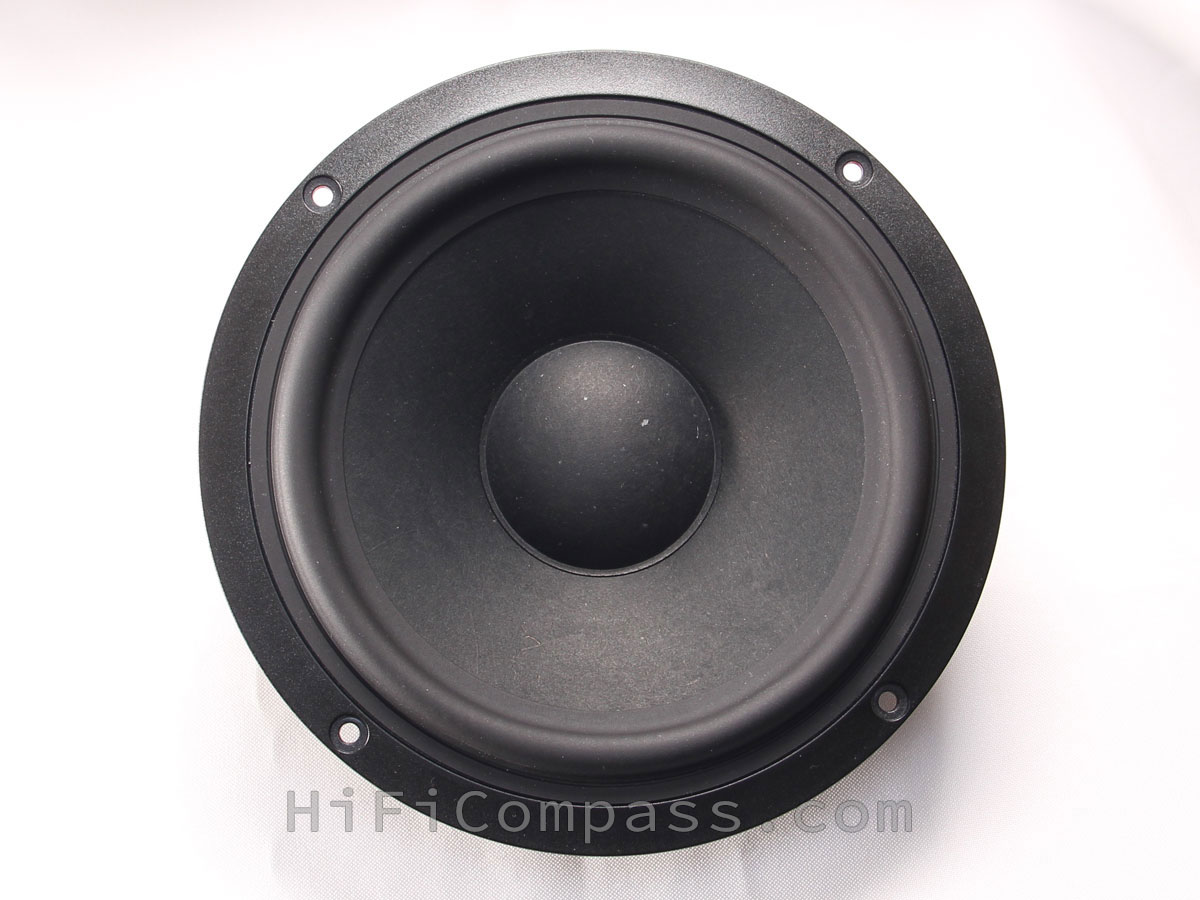 |
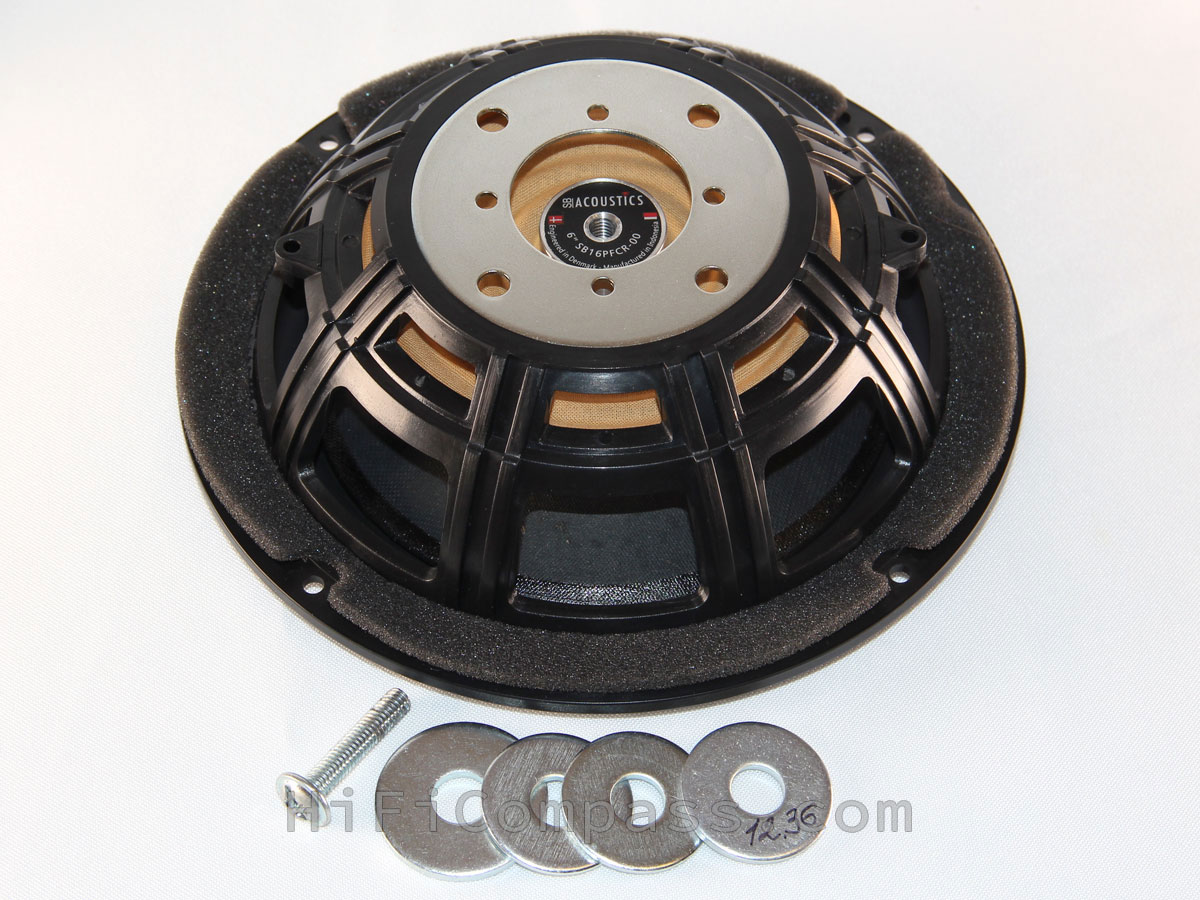 |
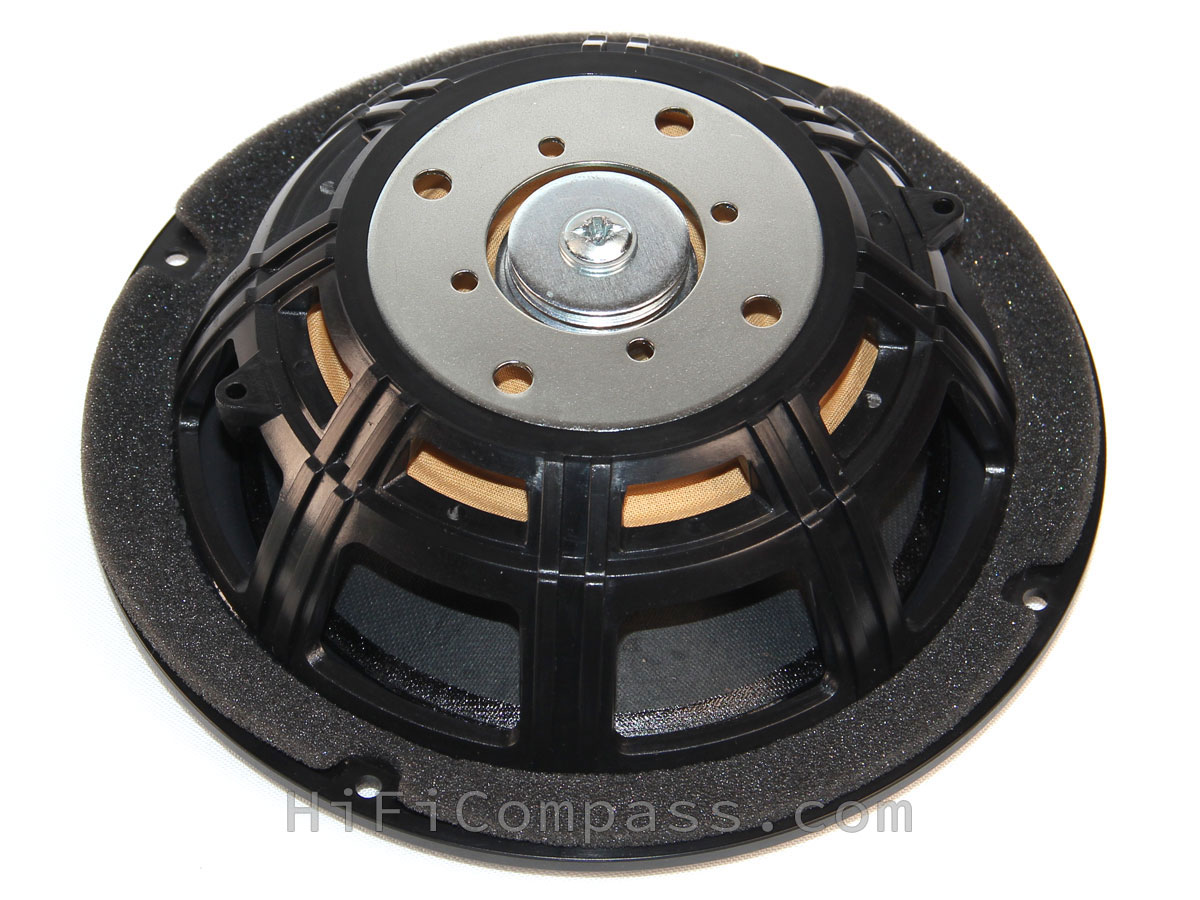 |
The choice of the loudspeaker low frequency tuning is never unambiguous, but always a compromise, taking into account various factors, often contradictory - depth of bass or its tightness, more weighty bass or more punchy, preferred musical genres, acoustic listening conditions, interaction of the loudspeaker and the listener with room bass mods, individual taste preferences. Except for one single case - when you buy a ready-made branded loudspeakers and there is nothing you can do about it, because this choice has already been made for you by the manufacturer on its taste![]() . The one who builds the loudspeakers himself has his hands free and he has the opportunity to choose his own, the closest to him compromise in his listening conditions.
. The one who builds the loudspeakers himself has his hands free and he has the opportunity to choose his own, the closest to him compromise in his listening conditions.
Of the variety of low-frequency settings that I have tested, achieved by combining the internal enclosure volume, added mass, and different damping of the PR resonance during the loudspeaker design process, I can recommend the following three:
The "Tight & Punch" setting of the LF response
Below are the near-field responses of the bass driver and PR, without any corrections for the membrane area. Time window is 500 ms, smoothing is 1/12 octave:
And now the result of an accurate addition, taking into account phase relationships, in the VituixCAD software (God bless and prosper to these guys![]() ):
):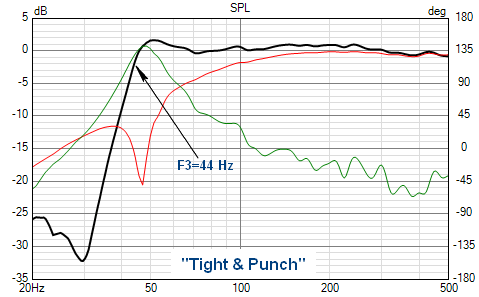
And here is what the VituixCAD simulator draws for these conditions: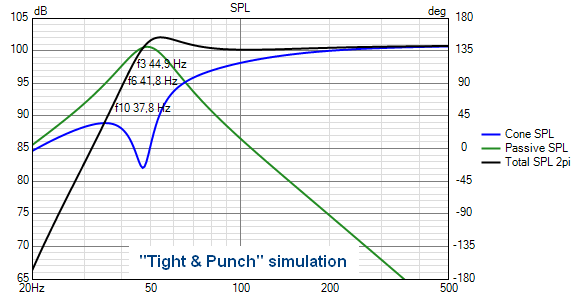
As you can see, there is an excellent correspondence between the results in practice and in the simulator. The lower cutoff frequency is F3=44 Hz, but there is a hump in the frequency response of a couple of dB. Not exactly the curve that most audiophiles dream of, but I assure you, it deserves attention. This is the most driving setting, which also can sound a little louder than others before the bass overload! It is perfect for rhythmic dynamic music with short bass notes. Rock, pop, disco, blues - they sound very driving and expressive on the bass, which here is incredibly dense and punchy. Double bass, bass guitar and all sorts of "oriental" drums often can be a little boomy. How tolerant you are of this is up to you.
The "Deep & Full" setting of the LF response
Here there is also a very good correspondence between theory and practice. The most meaty and full-bodied setting. Lower cut-off frequency is F3 = 39 Hz (don't forget, this is for bookshelf speakers with a 4" midwoofer!) and there is a very small hump in the frequency response. Not as driving as the previous setting, but more "fat" and more even in perception. It is universal, for all music genres.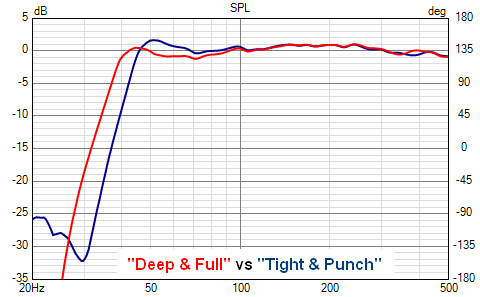
The "Balanced" setting of the LF response
This is the setting with the most "correct" frequency response and character somewhere in the middle between the previous two. For perfectionists and bores![]()
The speaker drivers measurements in the loudspeaker cabinet
The graphs below show the frequency response of the midwoofer and tweeter installed in the loudspeaker cabinet. The measurements were taken on an axis perpendicular to the front panel and crossing it through the center of the tweeter. Other measurement conditions are shown in the graphs. I draw your attention to the fact that the frequency responses are given without smoothing, with measurement time windows of 30 ms for the midwoofer and 3 ms for the tweeter:
The frequency responses of the speakers in the enclosure are quite smooth and does not imply any special problems when desegning a crossover. Below 5 kHz, the frequency response of the tweeter is spoiled by parasitic diffraction from the edges of the front panel, and the "Baffle-step loss" effect is clearly pronounced on the frequency response of the midwoofer, although it is not easy to determine its exact limits on these measurements. Two plateaus are clearly visible at levels of about 79 dB up to 200 Hz and 84 dB in the range of 800 - 2300 Hz.
Below are the speakers impedance frequency responses in the loudspeaker cabinet:
From the midwoofer impedance graph, you can see that the stray standing waves inside the cabinet are well suppressed.
Crossover #1. The measurements
This happened in the case of PuriBliss-4p25b too. Of all the crossover versions I settled on two, which has certain advantages and has every chance of winning the fight for its listener.
A bit of backstory. In the spring of 2022 Purifi presented the SPK8 demo loudspeakers at HighEnd-2022 show in Munich with exactly the same speakers and its own PTT4.0PR-NF2 passive radiators. The loudspeakers received very high marks from visitors. The documentation of this project is not published on their website yet, but you can find it in the thread on the DiyAudio.com forum. The project is very clever, the crossover frequency is chosen quite rationally, but its highlight is the fight with resonant amplification of midwoofer current harmonics by increasing the output impedance from the LF filter side at 5kHz membrane resonance frequency with a parallel notch. An excellent method, well described in their apnote Low Distortion Filter for PTT6.5X04-NAA.
In order not to reinvent the wheel, the SPK8 crossover was assembled and carefully listened to. It was necessary to determine its strengths and weaknesses and understand whether something could be improved at all. The very fact that my project appeared is the answer to all questions![]() .
.
The crossover topology of version #1 differs significantly from the SPK8, although the transfer functions of the low-pass and high-pass filters are very, very close to each other. I managed to implement a fairly satisfactory summation using a second-order electric high-pass filter (my principled position), and not the third, as in SPK8. The main "trick" is a completely different topology of the low-pass filter, thanks to which it was possible to significantly increase the output impedance in a wider frequency range. For comparison, at the same output impedance as the SPK8 at a 5 kHz membrane resonance frequency, the low-pass crossover filter #1 provides 6.75 times the output impedance, averaged over a range of 2 to 20 kHz. This contributes to significantly higher rejection of all non-linear products generated in the midwoofer voice coil circuit.
Below are on-axis and off-axis frequency response measurements with the first version of the crossover providing optimal sound in my listening room. The unevenness in the range of 350-800 Hz is associated with the inevitable room interference when doing a wide measurement time window (30 ms) measurements:
The final sensitivity turned out to be as high as 78 dB. It's kind of embarrassing to say such a figure, but nevertheless, we need to face the truth. If you want bass miracles from small loudspeakers, be prepared for such figures, you can't cheat physics![]() .
.
Crossover #2. The measurements
The crossover version #2 has nothing to do with version #1 and got the right to life due to better off-axis characteristics and a completely different sound character:
After all this technical tediousness, it is time to finally move on to the section, which I think is the most important of all, because no measurements, graphs, diagrams and pictures can give a complete picture of the sound of the system. Of course, it is possible to draw some conclusions and predict general trends, but no more.
I will try, as much as I can, to formulate my subjective impressions about the sound of the speakers, relying on generally recognized definitions of sound characteristics. After all, auditory impressions are the final product consumed by our brain.
Soundstage (sound picture)
The scale of the sound picture is the first thing that impresses from the first notes - it is simply huge. The entire sound cloud is located far behind the speakers, which simply dissolve into space. The sound is absolutely not tied to the speakers, you instantly forget about them and a truly living musical canvas unfolds before your eyes without boundaries in width and depth.
The height of the sound picture is quite realistic, there is no feeling that you are watching what is happening on the stage through a narrow slit.
Localization and focusing are excellent, the contours of sound images are very precise and clearly visible, no blurring. In large symphony orchestras, all the instruments are in their places, no one climbs forward and does not try to change with anyone, which is extremely important when listening to classical music.
The depth (echeloning) with the second version of the crossover is excellent, perfectly felt separation of instruments in space. Three-dimensionality of the sound canvas and sonic perspective are felt from the first notes. The sound images are well rendered, there is an air between them. With the first version of the crossover, such 3D sensations are less pronounced.
Transparency is very high over the entire frequency range. The impression of crystal clarity and purity of the sound canvas, especially in the first version of the crossover.
The concert hall atmosphere rendering and reverberation are quite good.
The physicality, fullness and relief of sound images are at an average level and better in the second version of the crossover.
Dynamic characteristics
The tonal balance is close to neutral, without any tints. Neither dry nor wet, neither warm nor cold.
The overtonal saturation is at a natural level, not overstated toward excessive colorfulness and not understated toward sterility.
The bass for such micro-speakers is simply amazing - deep, dense, dynamic, weighty and solid. Tight, like a tightly stretched rope and beats like a sledgehammer. It's low-fat and well-structured.
The drums are very dynamic. The double bass and cello are as alive, well readable, with many shades (halftones). The bass character strongly depends on the type of enclosure setting which I described before.
The grand piano sounds with excellent attack, energy and well-defined hammer strikes. The bass guitar with a well-read relief.
The mids are very natural, detailed, transparent and dynamic.
The resolution is very high. The loudspeakers allow you to view the musical material in the smallest detail.
Purity - very low distortion, no any extraneous sounds and distortions at any volume level.
Engagement - above average. You are not just watching the process from the outside, but even a little involved in it.
Sound features of crossover #1 and #2
The crossover version #1:
- The sound picture is wider and farther, the sound images are a little smaller
- More transparency and detail in the midrange
- Overall, a more airy and open sound
The crossover version #2:
- The sound picture is narrower, closer, three-dimensional and layered
- Slightly better localization and focusing
- Sound images are fleshier, have more physicality, there is a more space between them
- The sound is more forward, darker and softer
- More pronounced energy in the midrange
- Less pronounced sibilants on vocals
Unfortunately, it is very difficult to reliably convey the sound of the system in words, so, in support of verbal descriptions, I decided to record the sound of the loudspeakers in my audio system. Although this is not the most convincing way to convey the real listening experience, it may still be useful to someone.
Recordings of short pieces of music were made with the sole purpose of filling in the missing information about the sound signature of the PuriBliss-4p25b. The musical material was chosen very different, including a couple "ruthless" tracks, to expose the weaknesses of the loudspeakers as much as possible.
Description of the sound setup and recording conditions
- The sound source is a modified Dune HD Base 3.0 media player. The modification consists in installing a StreamLock jitter suppression module, designed and manufactured by a Ukrainian electronics engineer, and also a very enthusiastic music lover, Vladimir Deleverov.
- DAC - Denafrips Ares
- Power amplifier - AM Audio PA-100
- Loudspeakers - PuriBliss-4p25b with two crossover versions
- Microphone - matched pair RØDE NT5
- Sound card - Creative E-MU 0404 USB
- The room is an ordinary residential, 3.5m x 5m, the level of sound absorption is slightly above average
- The loudspeakers are installed along a long wall, the distance between the left and right loudspeakers is 170cm, from the loudspeaker to the front wall is 100cm, from the loudspeaker to the listening (recording) place 215cm
Here are links to folders with recorded music fragments:
PuriBliss-4p25b with the crossover version #1
PuriBliss-4p25b with the crossover version #2
By the time the development was finished, more than a dozen experienced music lovers were able to visit me and listen to the PuriBliss-4p25b. Despite its tiny size, the speakers managed to surprise absolutely everyone with their sound and the scale of the soundstage. It was often a real spectacle for me to watch the reactions of the guests![]() . I hope that many of them will agree to give their very short essay about acquaintance with the loudspeakers, which I will publish following the description of the project itself.
. I hope that many of them will agree to give their very short essay about acquaintance with the loudspeakers, which I will publish following the description of the project itself.
Absolutely everyone expressed the opinion that for comfortable listening to music (not for disco and not for listening from the next room, as some people like to do) in a room of up to 18m2 these babies are enough in 95% of cases. Although, many would like to have some horsepower under the hood. My guests are music lovers "with mileage", the age category is mostly "40+" - the phase of life, when hormones stop playing, mature taste in music has been formed and a lot of listening experience has been accumulated.
If we talk about genre preferences, I would characterize the loudspeakers as absolutely omnivorous. But from the point of view of conveying the fullness of emotions and recreating reality when performing orchestral or rock music, they, of course, lack both fundamentality at very lows and the ability to create adequate sound pressure. However, do not forget that we are talking about tiny dwarfs with a four-inch woofer![]() .
.
Two versions of the crossover give the user the opportunity to choose the sound closer to their own taste preferences.
Because of the low sensitivity, the loudspeakers need an amplifier with maximum undistorted power of about 200 watts to reach their full potential. Nevertheless, even from my 18-watt SET amplifier they "purr" very nicely on any kind of music at moderate volume.
- Operating frequency range – 40 Hz-45 kHz (-3 dB) with an unevenness of no more than +/-2 dB
- Average sensitivity in the range of 100 Hz-10 kHz - 78 dB/2.83 Volt at 1 m
- Nominal impedance – 4 ohms (the minimal value is 4.5 ohms @200 Hz)
- The type of the enclosure LF design - passive radiator type
- Minimum Amplifier Power - 50-80 Wats peak undistorted power
- Dimensions (HхWхD) – 265 mm*160 mm*265 mm
- Weight - 11.5 kg/pair
Update of January 04, 2024:
At the moment there is a possibility to purchase the PuriBliss-4p25b(II) DIY loudspeaker kit. Please visit the page.
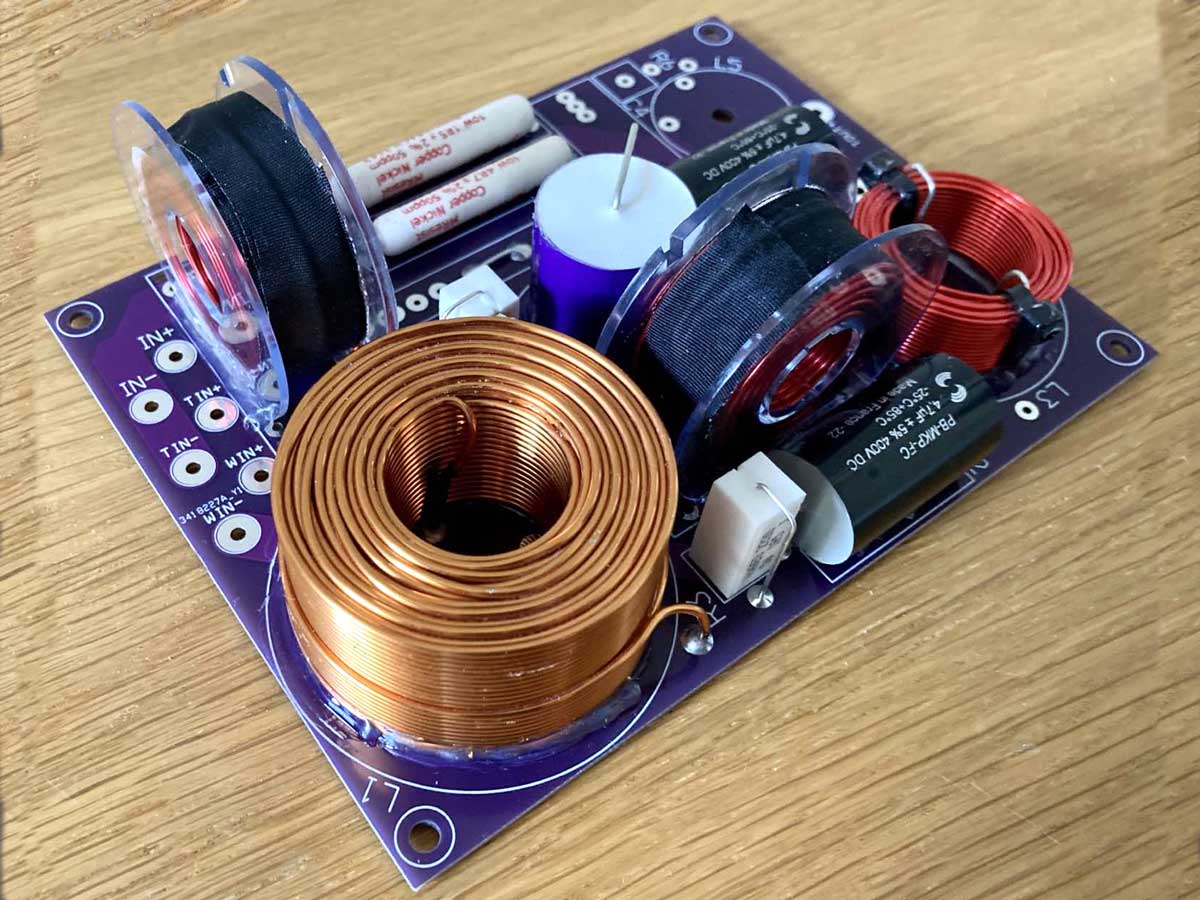 |
 |
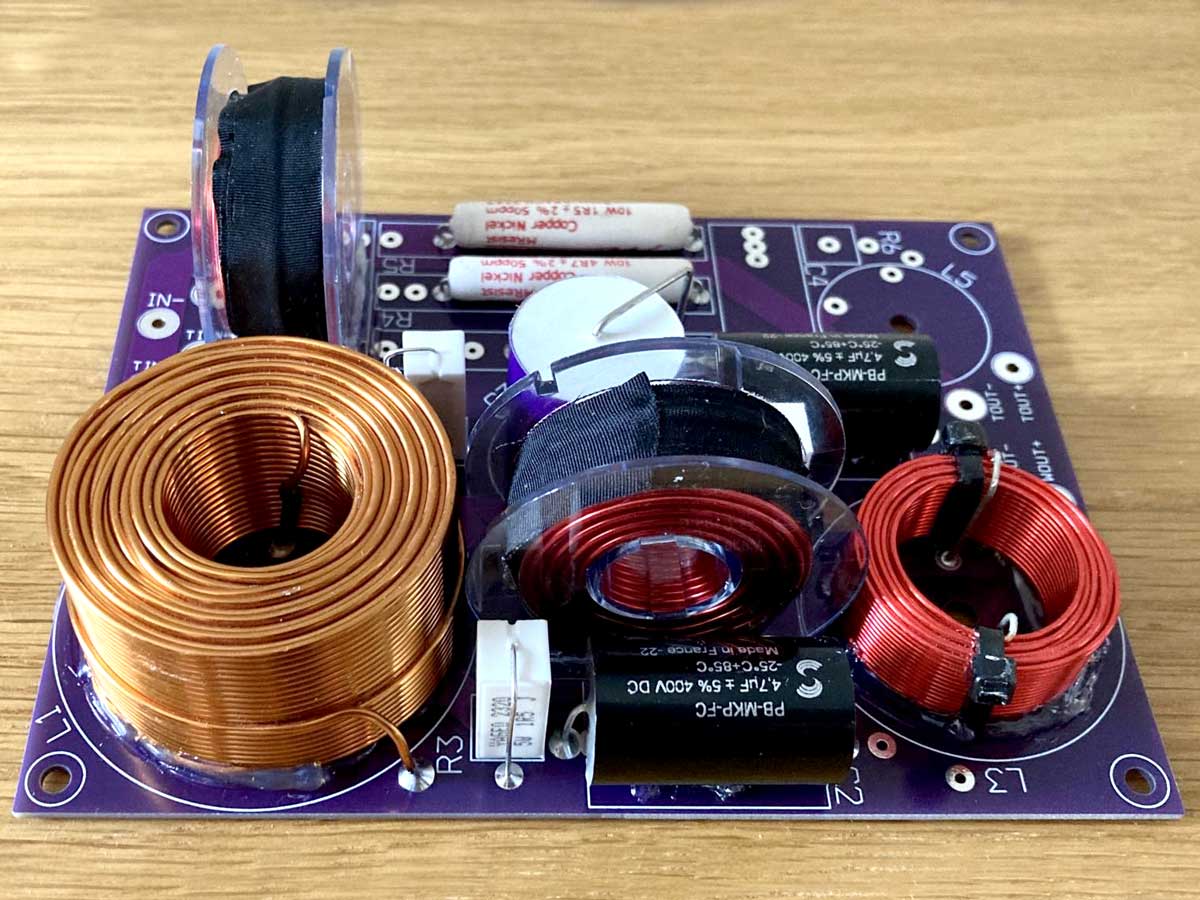 |
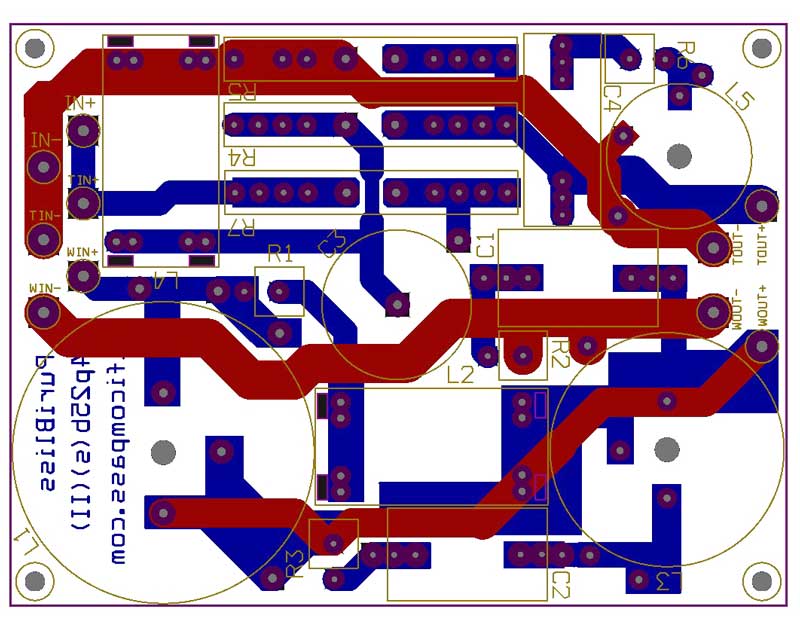 |
 |
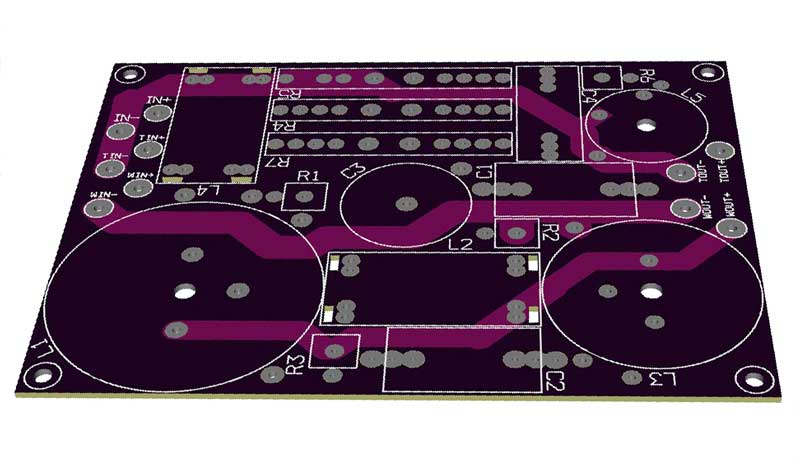 |
We can make ready-made speakers to order. For purchase inquiries, please contact hificompass@gmail.com
Yevgeniy Kozhushko/07.03.2023
Stanislav Zhuravel, Dnipro
Знакомство с данной акустической системой для меня стало своего рода определением собственной высоты в референсе на сегодняшний день. Теперь это точка отсчёта от которой я характеризую максимум получаемого удовольствия от прослушивания музыки в данном формате акустических систем.
Эта акустика, которая умеет дарить эмоции. Это акустика, которая несёт в себе полный запас эпитетов, применяемых при описании звука.
Прошу все мои слова учитывать правильно, исходя из правил правильного согласования размеров акустики и размеров помещения для получения общего результата. Это акустика для музыки, а не для анализа звукового материала и расщепления его на составляющие. Послушайте их и вы поймёте, что в её небольшом корпусе живёт поистине большой и взрослый звук, в ней зрелый голос и масса эмоций. Браво!
Oleg Big Mac, Dnipro
Ощущения от прослушивания миниатюрных полочников : в самом начале завораживает ширина и эшелонированность сцены, глубина и сочность баса, чёткая артикуляция акустики в достаточно сложных композициях, детализация хорошая, не раздражающая. Далее наступает когнитивный диссонанс когда ты видишь реальные размеры... возникает ощущение, что над тобой потешаются и играет акустика как минимум в три раза больше размерами (логическое несоответствие форм фактора). Прослушивание любимых композиций сопровождает пиломоторный рефлекс (мурашки по коже). Считаю лично для себя эту модель уникальной во всех отношениях. Спасибо большое Евгению за такую возможность. Олег Бигмак.
Konstantin Popov, Northern Carolina, USA
I've been closely following Eugeny's designs and projects as I consider him one of the best in this business. He consistently presents interesting, top-class, and well-implemented solutions in speaker design, and this project was no exception. I started discussing the project details the moment I learned he was working on PuriBliss-4p25b. Eventually, Eugeny provided me with some sound descriptions and even shared speaker recordings from his listening room. Even these recordings intrigued me, as I couldn't imagine that capturing a set of speakers using a microphone could convey the tonal balance and atmosphere of the reproduction so well. I asked myself: if the recordings sound this good, how excellent must the actual speakers be? When I had the opportunity to build a set of PuriBliss-4p25b for myself, I immediately went for it, and oh my, I was impressed. As a point of reference, my main speakers feature two 6.5-inch Purifi paper woofers, a Purifi 6.5-inch midrange, and a Bliesma T34B tweeter. Plugging in these small PuriBliss-4p25b 2-way speakers, I was astonished by the scale of the sound they produced, especially considering their small size (the box is smaller than the mid-range module enclosure of my 3-ways!). The PuriBliss delivers a clean, open, and powerful sound. They exhibit an extremely well-balanced sonic profile, offering remarkable resolution while maintaining musicality and a full-bodied representation of the music. The sound fills the room beautifully, and they can play loudly without audible distortion, even when the woofers approach their X-mechanical limits. PuriBliss-4p25b excel in playing all styles and genres of music, a characteristic that is extremely important to me. While the speakers are not very efficient, benefiting from a more powerful amp, I used them with a 25-50W Class A amp without issues. However, playing music at high volumes with less powerful amps will naturally expose power amp distortions as the speakers are so "clean and transparent". In my opinion, these speakers are amazing and might be the best 2-way I've ever heard, especially considering their compact size.
Igor Kovrigo, Kiev
Имел удовольствие послушать этот проект в записи - стерео-пара Rode NT5. Впечатления очень положитлеьные. Второй вариант кроссовера "зашел" больше - более музыкальный (мы все-таки музыку собиираемся слушать, а не мерять расстояние от задней стенки акустики до стены)) Действительно поражает "размер музыкальной картинки" от таких манюнь)) Являюсь счастливым обладателем Жениных полочников "Pharaon 2 Magico Mini". Новый проект считаю замечательным продолжением поиска автора в сторону двухполосных полочных систем высокой верности. Очень рекомендую этот вариант полочников для ценителей качественного звука, которым нужно максимальное качество при минимальном размере и вменяемой цене. Женя, так держать!
CONTACTS
- Ukraine
- (+380) 95 904 7827
- hificompass@gmail.com
LAST NEWS
-
27 Mar 2025
-
04 Mar 2025
-
25 Feb 2025
-
10 Feb 2025

